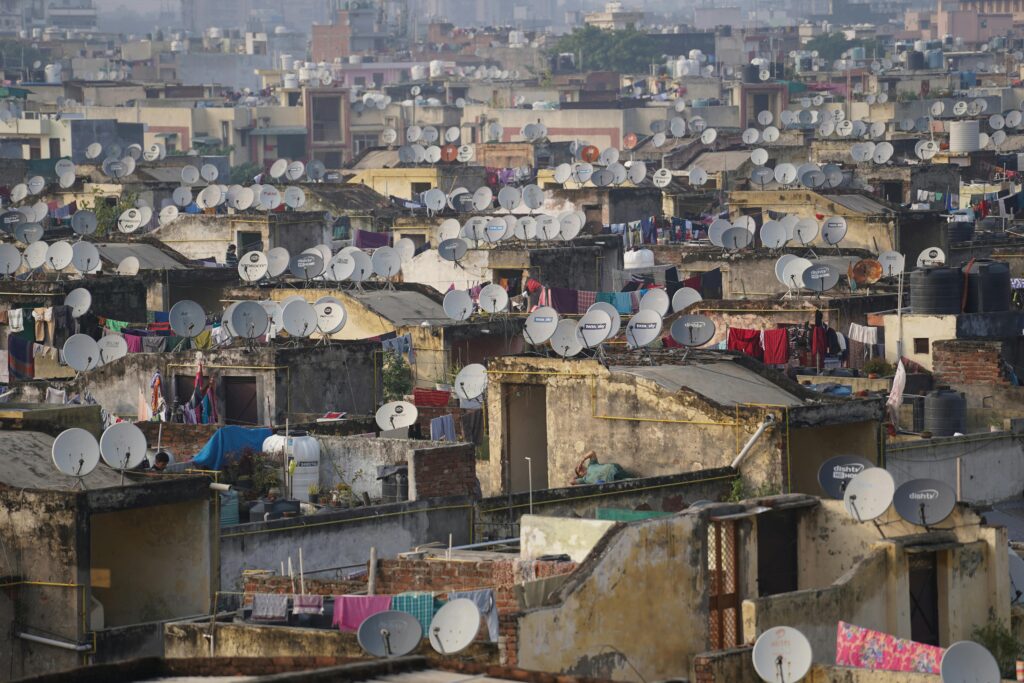Inclusive Urbanisation – A Study of Indian Slums
The document titled “Inclusive Urbanisation? A Study of Indian Slums” investigates the relationship between urbanization and slum development in India, focusing on the challenges of achieving inclusive urban growth. The study analyzes data from 2001 and 2011 to understand how slum populations have evolved in relation to overall urban populations across various Indian states.
Context of Urbanization in India
Urbanization in India has been a double-edged sword. While it has spurred economic growth, it has also led to significant social and spatial inequalities. The rapid influx of people from rural areas seeking better opportunities has resulted in the proliferation of slums, which are often characterized by poor living conditions, inadequate infrastructure, and limited access to basic services. The study emphasizes that despite government efforts to promote inclusive urbanization, many urban policies have failed to address the needs of slum dwellers effectively.
Key Findings
Slum Population Growth
The research reveals a disturbing trend: the slum population is increasing at a faster rate than the overall urban population in most Indian states. This growth is not confined to high-income states but is also evident in newly developing regions. The concentration of slum populations is shifting, indicating that economic growth does not necessarily translate into improved living conditions for all urban residents.
Economic Inequality and Urbanization
A significant finding of the study is the positive correlation between economic inequality and the expansion of slum populations. As cities grow economically, the benefits are often unevenly distributed, leading to increased disparities. This exclusionary urbanization perpetuates the existence of slums, as marginalized communities remain trapped in cycles of poverty and deprivation.
Impact of Government Policies
Despite various initiatives aimed at poverty alleviation and inclusive urban development, such as housing schemes and infrastructure projects, the study highlights that these efforts have often been insufficient or poorly implemented. Many policies fail to take into account the realities faced by slum dwellers, resulting in continued marginalization.
Implications for Urban Policy
The findings suggest that achieving inclusive urbanization requires a fundamental shift in policy approaches:
- Holistic Urban Planning: Policymakers need to adopt integrated strategies that consider the needs of all urban residents, particularly those living in informal settlements. This includes ensuring access to basic services like water, sanitation, and electricity.
- Community Engagement: Involving slum dwellers in the planning and decision-making processes can lead to more effective solutions that address their specific challenges. Empowering communities can foster resilience and improve living conditions.
- Addressing Economic Inequality: Strategies must be developed to tackle economic disparities that contribute to slum proliferation. This involves creating job opportunities and improving access to education and skills training for marginalized populations.
- Monitoring and Evaluation: Implementing robust mechanisms for monitoring and evaluating urban policies is crucial to ensure that they are meeting their intended goals. Regular assessments can help identify gaps and areas for improvement.
Conclusion
The study concludes that while urbanization has the potential to drive economic growth, it often does so at the expense of inclusivity. The persistence of slums amidst economic expansion highlights the need for a more equitable approach to urban development in India. By recognizing the contributions of slum dwellers and addressing their needs through inclusive policies, cities can work towards creating environments that foster social cohesion and economic opportunity for all residents.
In summary, “Inclusive Urbanisation? A Study of Indian Slums” underscores the complexities of urban growth in India, revealing how exclusionary practices can undermine efforts toward inclusive development. The recommendations provided aim to guide policymakers in creating a more equitable urban landscape that benefits all citizens, particularly those living in vulnerable conditions.

Further reading:
[PDF] INCLUSIVE URBANISATION? A STUDY OF INDIAN SLUMS jurareview
Smart Cities and the Poor: Towards an Agenda for Inclusive Urbanizatio routledge
